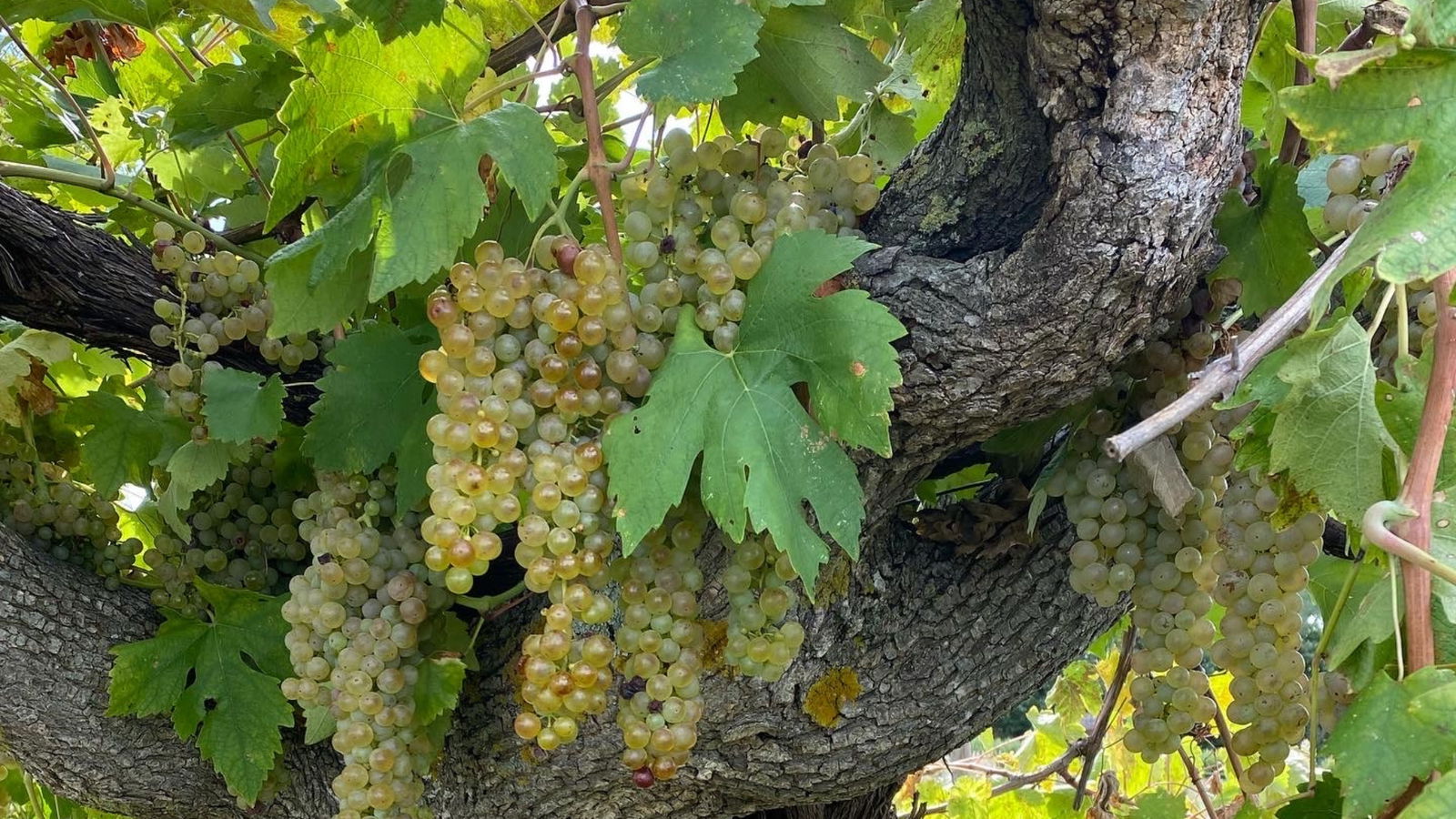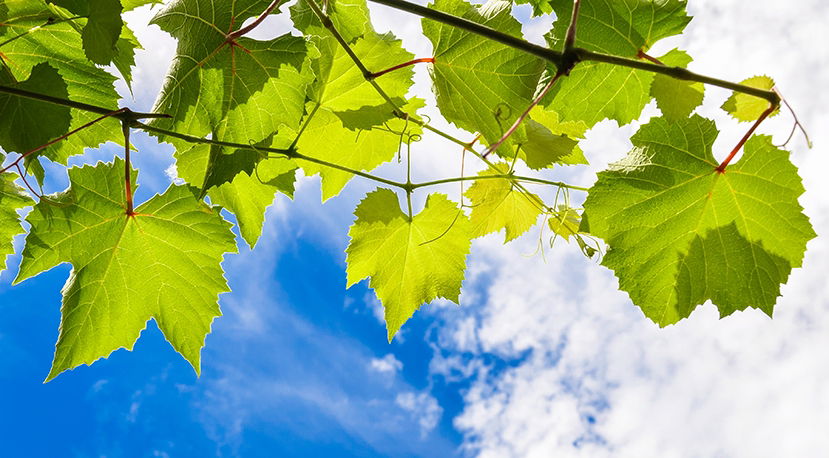BLOG
To Graft or Not to Graft: The Value of Ungrafted Vitis Viniferas
Jacopo Mazzeo Viticulture Insights

Without Joker, could Batman ever be a real superhero? Or Sherlock Holmes the world’s greatest detective, if criminal mastermind Professor James Moriarty wasn’t a threat to his very own life? All heroes have nemeses, and vitis vinifera – certainly a real hero to many a wine lover – has one too: phylloxera.
Phylloxera is a tiny yellow sap-sucking aphid that devastated much of Europe’s vineyards between the second half of the 19th century and the first half of the 20th. The wine industry only recovered once vitis vinifera species were replanted by grafting them onto American rootstocks, which are naturally resistant to the pest. No alternative solution to the threat of phylloxera has ever been found, therefore the planting of ungrafted vines remains tightly regulated. Some vineyards however, did manage to survive phylloxera’s devastating effect. Various regions simply benefited from their inaccessible topography or geographical isolation, while others were planted on volcanic or predominantly sandy soil, which are believed to be inhospitable to the pest.
Plots of ungrafted vines are known to survive in Chile, Australia, and Washington state for instance, while Greece’s Santorini, Italy’s Mount Etna and Mount Vesuvius (Sicily and Campania respectively), and Spain’s Toro (Castilla y León) are some of the best-known European examples.

Loic Pasquet
Some remain in Bordeaux’s Graves, too. Managed by Loïc Pasquet, these ungrafted vines of pre-phylloxera Bordeaux varieties such as Castet, Pardotte, and Mancin are responsible for what’s known as the world’s most expensive wine: Liber Pater, a wine sold as vin de France whose bottles demand eye watering prices of about $40,000 each.
Pasquet is widely acknowledged as one of the world’s leading ungrafted-vine evangelists. As part of his advocacy work, he created the Francs de Pied (French for “ungrafted”) group, a circle of vignerons united by their love for ungrafted grapevines and the belief that these – free from the medium of foreign rootstock material – embody the purest expression of a vine variety.

@Liber Pater
With Pasquet himself as chairman, renowned Mosel winemaker Egon Müller as vice-president, and young Italian vigneron Andrea Polidoro as secretary, the group is now a growing association of producers. It includes Askaneli (Georgia); Thibault Liger-Belair (Burgundy); Chartogne-Taillet (Champagne); Feudi di San Gregorio (Campania); Joh. Jos. Prüm (Germany); and Dominio de Es (Spain). The group’s goal is to provide ungrafted vines with greater public awareness and, most importantly, official recognition. The association also benefits from the support of influential patrons such as Prince Albert II of Monaco, who hosted the group’s official launch in June 2021, Georgian president Salomé Zourabichvili, and Italian entrepreneur Pasquale Forte.
LOOKING FOR EVIDENCE
“When I met Loic, he told me that he needed to define the sensory characteristics of francs de pied wines and that he wanted to have a scientific committee [to do it],” says French neuroscientist and wine enthusiast Gabriel Lepousez, who’s joined Pasquet’s project as part of the group’s scientific committee. “We need to understand what the sensory signatures and the profiles of these wines are.”
Although the committee’s work is still very much in its early stage, Lepousez has already identified a range of sensory characteristics he claims are widely employed to describe wines made with grapes grown on ungrafted vines. “These wines would be less intense in color, less dense and concentrated, with finer tannins, more fluid, saline, and stimulate more salivation… [They are said to be] precise, fresher, brighter, lighter, more persistent with more energy,” he says. “Some of these descriptors are rather precise, others … subjective: what is energy and brightness in wine?”
Last year, Lepousez took part in a comparative tasting organized by France’s leading wine magazine La Revue du Vin de France, that involved 15 “grafted vs ungrafted” pairs of wines from Italy, France, Switzerland, Portugal. The tasting was a crucial starting point for Lepousez to delineate a credible list of sensory descriptors common to all ungrafted wines, yet he clarifies that the tasting had no scientific basis, “it wasn’t rigorous from a sensory perspective, not very objective”.
He argues that more evidence-based comparative research needs to be done, wherein all grafted control samples are scientifically relevant, i.e. made from the same producer, terroir, vine age, and following the same steps in the winemaking. “I hope we can start to be more productive as soon as the association gets bigger and we get valid ungrafted vs grafted pairs. In the future, such comparative sensory analysis will be also combined with a chemical analysis to identify potential markers of ungrafted wines.”
SUSTAINABLE BENEFITS



@Polidoro
Polidoro manages a few small plots of Malvasia Bianca di Candia plants in Italy’s Marche region. Some consist of relatively recent and conventionally trained grafted vines. One, however, involves centenarian ungrafted vines growing up to three meters high alongside field maple trees, embracing a millennia-old training system that survives in but a handful of vineyards across Italy.
He points out that elements such as sapidity and increased salivation derive from his ungrafted vines’ capability of yielding lower-pH wines. “The pH is between 3.25 and 3.32 after the malolactic fermentation, while my other wines are 3.38-3.48, which is very significant,” says Polidoro. “The lower pH helps the preservation of the wine and also a cleaner fermentation with less risk of bacterial contamination, but also leads to a very specific type of sapidity and a different salivation.”
Beyond sensory benefits, Polidoro argues that ungrafted vines might also offer a more sustainable solution if compared to grafted plants, adding that they might be better suited to tackle the effects of climate change. “The absence of the graft-filter means that there is a more direct, intimate relationship between the root system and the canopy. This ensures that the plant is able to naturally regulate itself.”



@Polidoro


@Polidoro
He explains that grapes grown on ungrafted vines accumulate less sugar – about 0.5% abv less than fruit from grafted plants – and that phenolic phases regularly occur on the same days, regardless of vintage conditions: “In 2020, I harvested them on October 1st. In 2021 – a very hot year – again on October 1st, and in 2022 – which was even hotter – on September 30th, but that’s just because I knew it was going to rain the day after. Nearby grafted vines were harvested on 30th, 24th, and 21st of September respectively.”
AN UNCERTAIN FUTURE

@Numanthia
Alejandro Vicente, vineyards manager at LVMH-owned Bodega Numanthia, is in charge of managing some 200 hectares (494 acres) of old, ungrafted Tinta de Toro vines across the Toro region in north-western Spain. Some of these bush vines date back two centuries.
The winery is not involved with the Francs de Pied project, but Vicente is nevertheless a staunch supporter of the historical and cultural value of ungrafted vines. “I'm really proud to manage these historical vineyards,” he says. “A vine that does not derive from grafting two different plants (which is a bit like a Frankenstein), is a fantastic sight, it gives you goosebumps,” he says.
Despite the remarkable longevity of the vines of Toro, Vicente regrets that some very old ungrafted plants do eventually succumb to time. While dead plants were once rarely replaced, the team at Numanthia has been recently driven to cover the gaps to ensure the survival of his vineyards. “For a very long time people were just accepting the loss of a vine and would just live with the lower yield they would get as a result,” says Vicente. “But our old vines already give very low yields, so we are working hard to make sure we will have plants – and good yields – in the future.” All of Numanthia’s replanting efforts however, are not to the benefit of the world’s ungrafted vine population. Indeed, younger plants do involve selected cuttings from some of Vicente’s best-performing Toro vines, but the new ones are always grafted onto American rootstocks. “[EU regulations make it difficult] to replant ungrafted vines, so when we replant, we use a very powerful rootstock, like 140 Ruggeri, trying to push these tiny vines. They are competing with their neighbors so they need years to establish themselves.”
Such strict regulations were implemented to ensure the future viability of the viticultural industry by preventing the phylloxera crisis from repeating itself. Indeed, phylloxera has been proven capable of creating panic even in areas once believed to be entirely immune. As recently as 2019 for instance, Washington state growers in Walla Walla – a region whose harshly cold winters were deemed sufficient to keep phylloxera in check – had to confront the dreaded threat of a potentially serious outbreak.
By deterring or forbidding growers from replacing ungrafted vines however, restrictions are putting the world’s ungrafted vine population at risk of extinction. To save ungrafted vineyards from inevitable demise, the Francs de Pied group is now seeking recognition from the United Nations Educational, Scientific, and Cultural Organisation (UNESCO), with its scientific committee currently working alongside members to build a case for the application.
Not only would UNESCO listing encourage growers to plant new ungrafted vineyards, it would also prevent existing ones from being uprooted and help increase wine-drinker awareness of their historical and cultural value.
“Ungrafted vines represent a unique heritage that is as old as wine itself and we need to preserve it,” says Pasquet. “Wine is not only wine, each bottle contains a lot of spirituality and culture that has been part of humanity for 8000 years. That is why we need UNESCO recognition.”
Pasquet highlights that the UNESCO application process – which entails the examination of countless vinegrowing traditions across the globe – will take years to complete, but argues is key to ensure survival of ungrafted vines: “Each place in the world has a specific vine culture which we want to preserve,” he says. “If we don’t do anything, these will be lost forever.”



